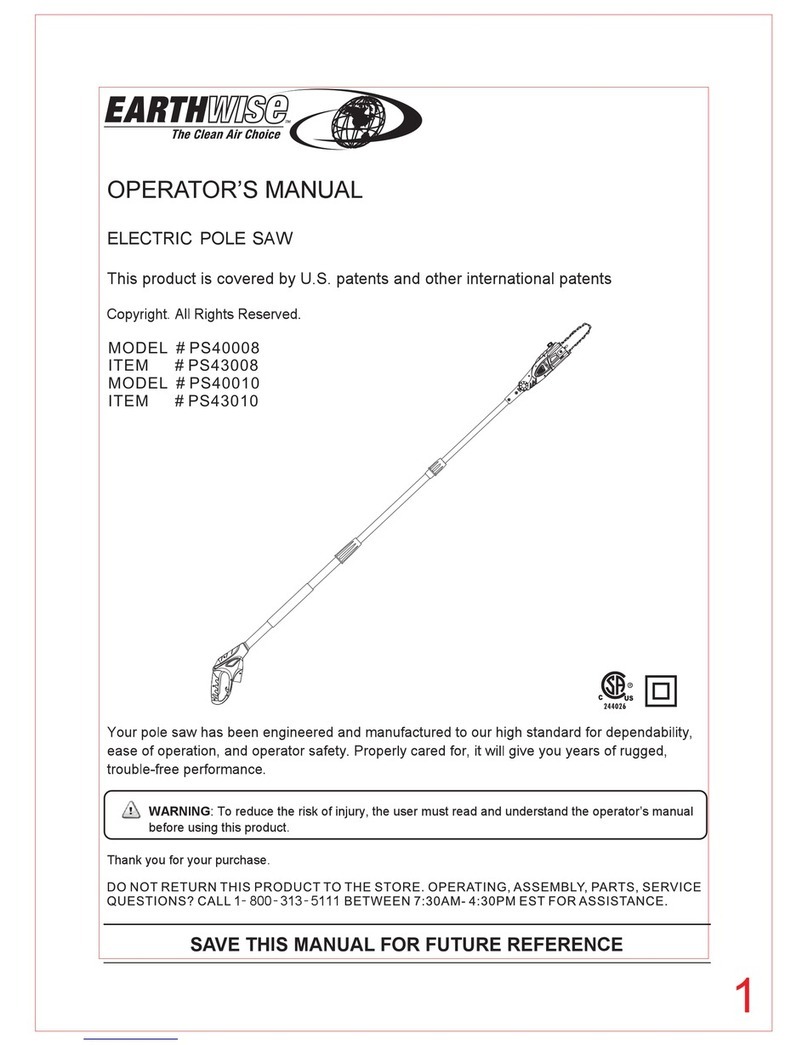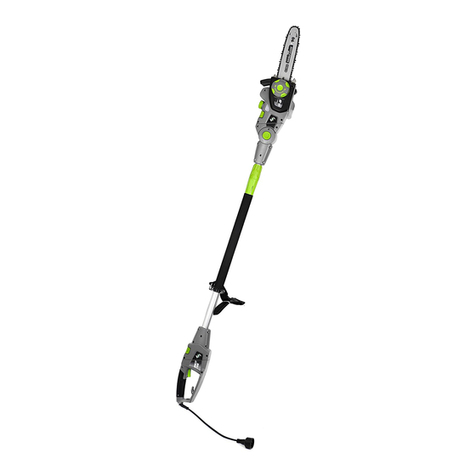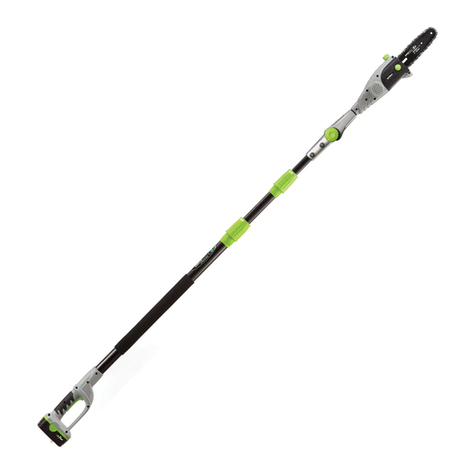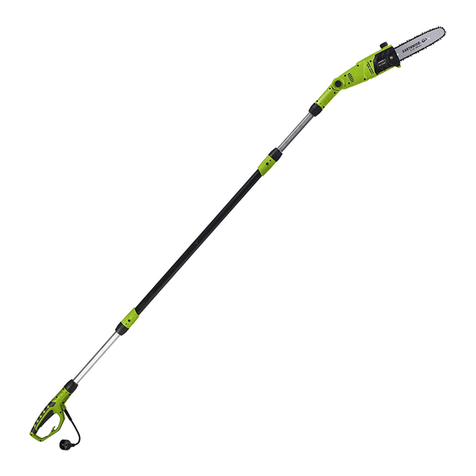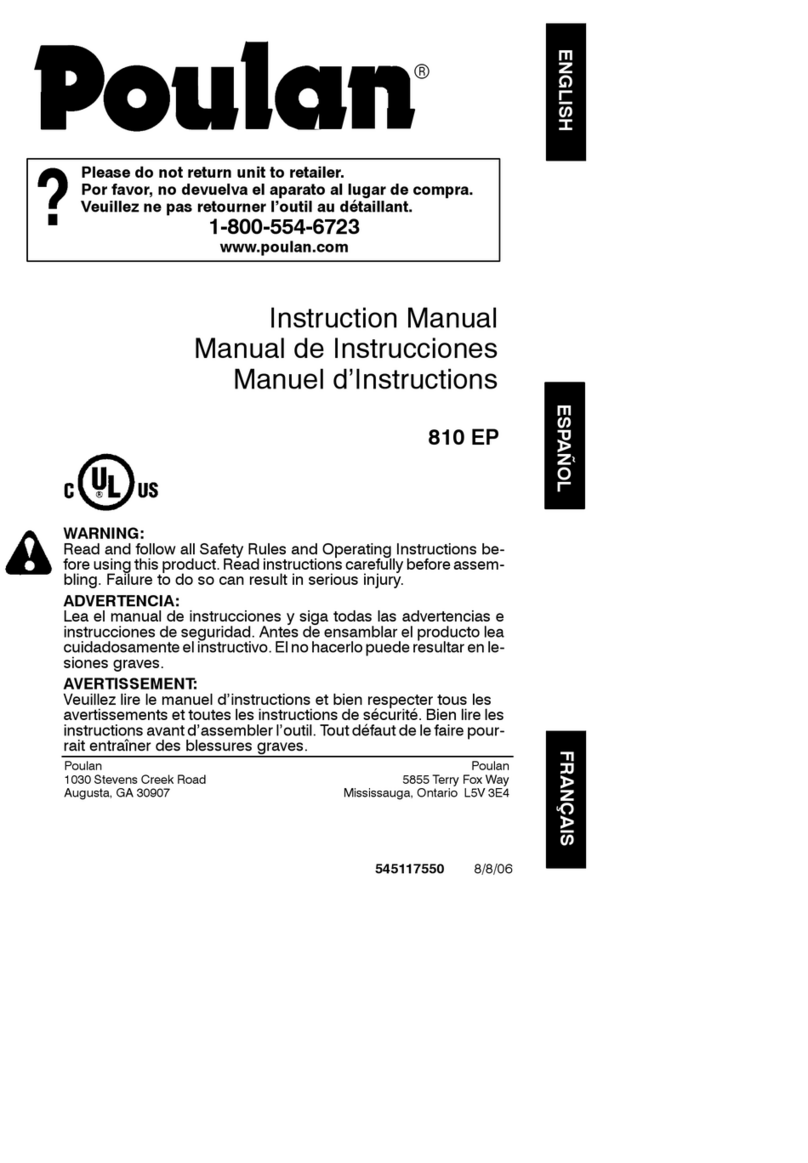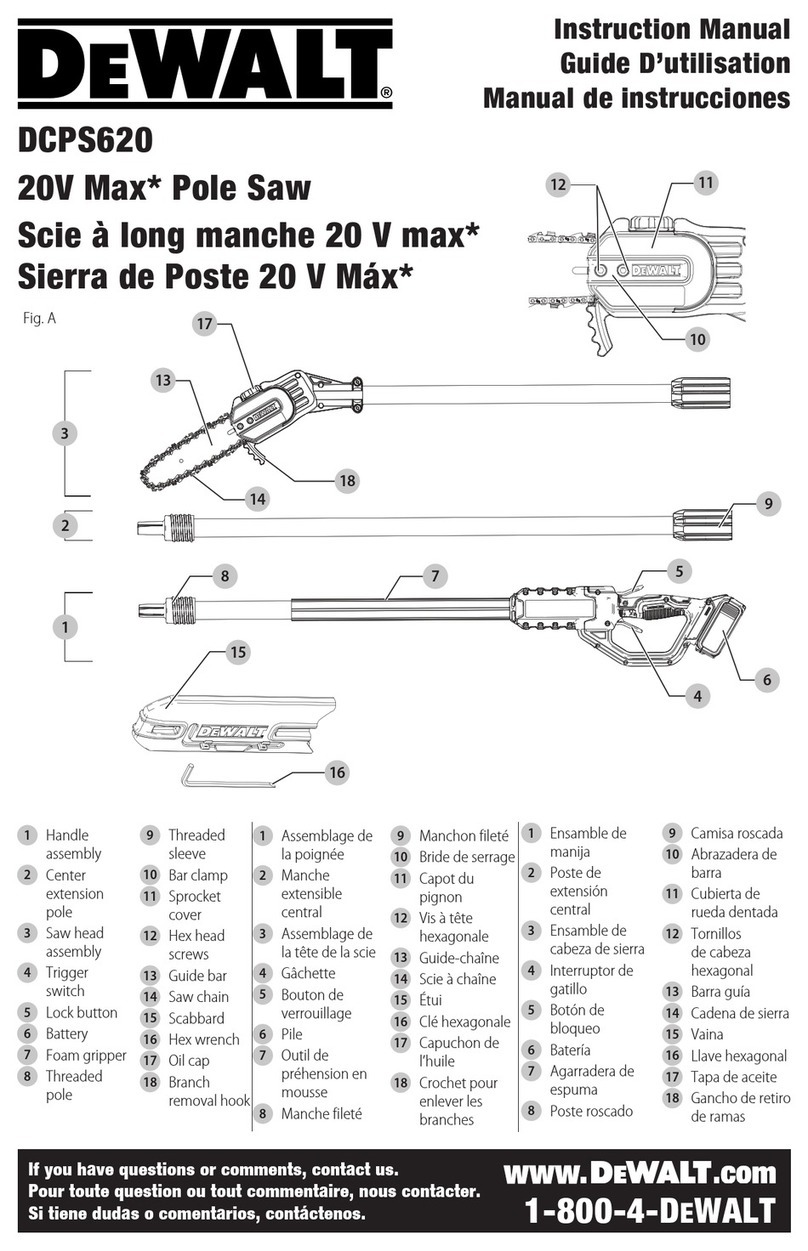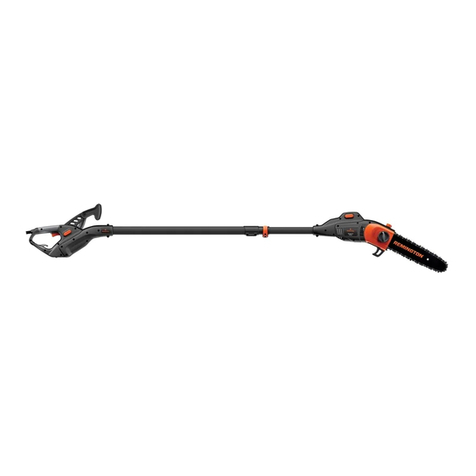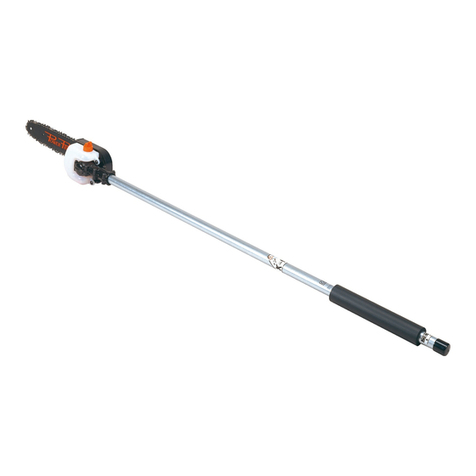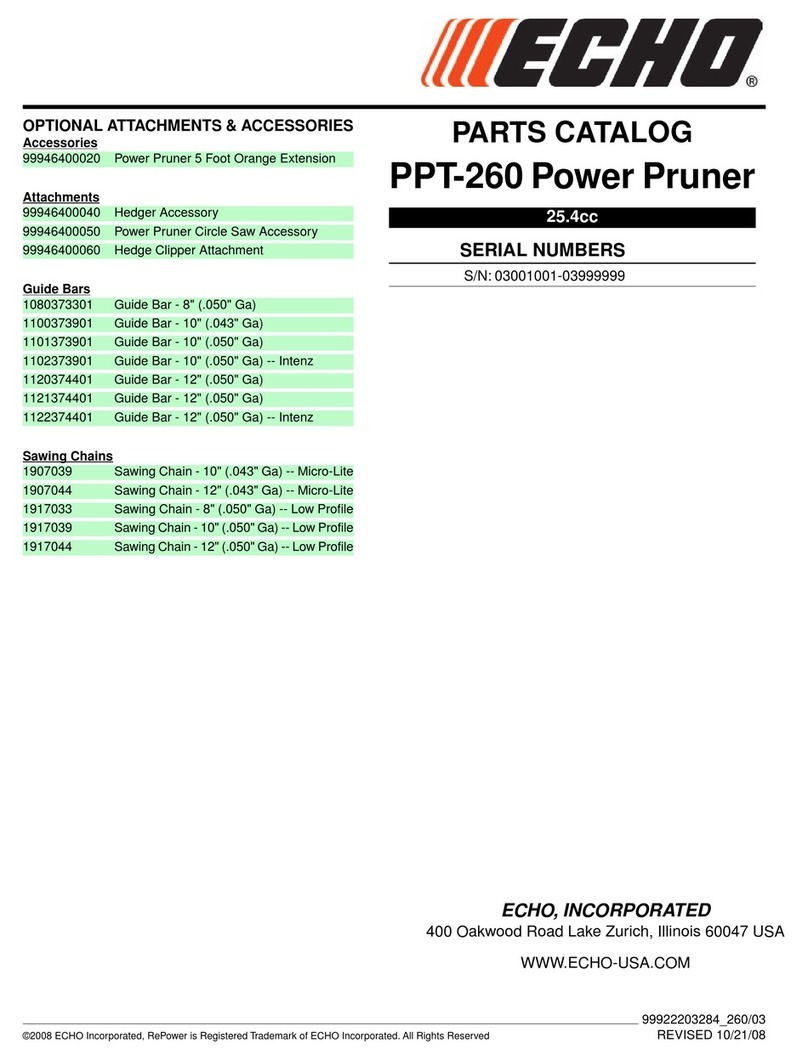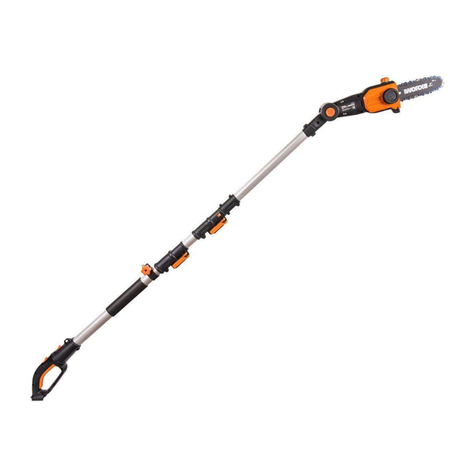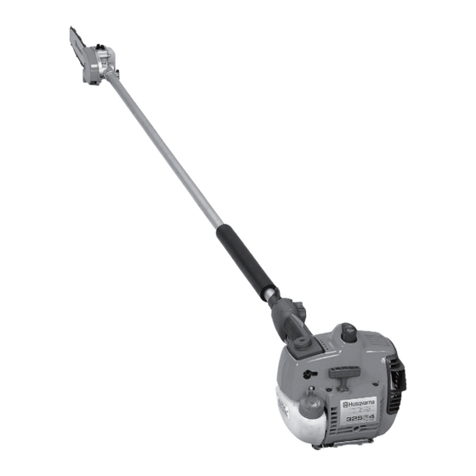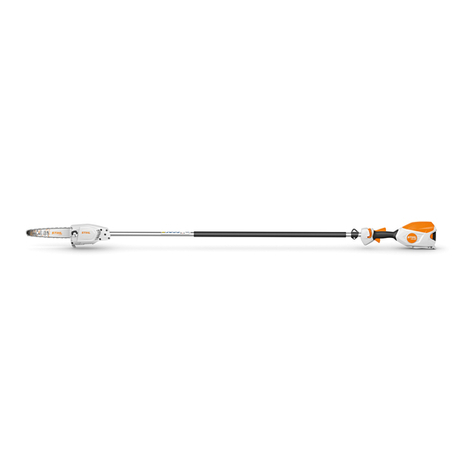GENERAL SAFETY
IMPORTANT SAFETY WARNINGS
TO REDUCE RISK OF INJURY:
Before any use, be sure everyone using this tool
reads and understands all safety instructions and
other information contained in this manual.
CAUTION: Wear appropriate personal hearing
protection during use. Under some conditions
and duration of use, noise from this product may
contribute to hearing loss.
Save these instructions and review frequently prior to use
and in instructing others.
WARNING: When using electric gardening appliances,
basic safety precautions should always be followed to
reduce risk of fire, electric shock, and personal injury,
including the following:
READ ALL INSTRUCTIONS
AVOID DANGEROUS ENVIRONMENTS – Don’t use
pole saw in rain, damp or wet locations. Do not operate
pole saw in gaseous or explosive atmospheres.
Motors in these tools normally spark, and the sparks
might ignite fumes.
DRESS PROPERLY – Don’t wear loose clothing or
jewelry. Wear protective hair covering to contain long
hair. They can be caught in moving parts. Use of rub-
ber gloves and substantial footwear is recommended
when working outdoors.
USE SAFETY GLASSES – Wear safety glasses with
side shields or goggles that are marked to comply with
ANSI Z87.1 standard when operating this product. Use
face or dust mask if environment is dusty.
DANGER: Risk of cut. Keep hands away from chain.
Keep both hands securely on pole and handle when
power is on.
USE RIGHT APPLIANCE – Do not use appliance for
any job except that for which it is intended.
USE HEAD AND FACE PROTECTION: Wear a
safety hard hat with a full face shield that meets the
ANSI Standards ANSI Z89.1 or CE Standards while
operating the pole saw .
CAUTION: Never stand under the limb being trimmed.
Position yourself out of the way of falling debris
DISCONNECT POLE SAW from the power supply
when not in use or when servicing or cleaning. Do not
leave unattended.
AVOID UNINTENTIONAL STARTING – Don’t carry the
pole saw with finger on switch. Be sure switch is off
when installing battery pack.
CAUTION: Never carry pole saw with one hand. Doing
so could cause saw to become unbalanced and dam-
age may occur. Failure to heed this warning can result
in serious personal injury.
KEEP CHILDREN AWAY - All visitors, children and
pets should stay at a safe distance from the work area.
STORE IDLE POLE SAW INDOORS – When not in
use, the pole saw should be stored indoors in a dry and
high or locked-up place, out of reach of children.
DO NOT ATTEMPT to remove cut material or hold
material to be cut when pole saw is on and the chain is
moving. Make sure switch is off when clearing jammed
material from chain. Do not grasp the exposed cutting
edges when picking up or holding the saw.
CAUTION: Chain coasts after pole saw is turned off.
WARNING: To protect yourself from electrocution
maintain a min. of 50ft (15m) from overhead electrical
lines.
DON’T FORCE POLE SAW – It will do the job better and
with less likelihood of a risk of injury at the rate for which
it was designed.
STAY ALERT – Watch what you are doing. Use
common sense. Do not operate pole saw when you are
tired or under the influence of medications, drugs or
alcohol.
DANGER: If chain jams on any electrical cord or line, DO
NOT TOUCH THE BAR AND CHAIN! THEY CAN BE-
COME ELECTRICALLYLIVE AND VERY DANGEROUS.
Release the unit in the safest manner possible. Disconnect
the damaged electrical cord or line from the power source.
If possible, do so safely. If in doubt, call an electrician or
the electrical contractor for assistance. Failure to heed this
Danger will result in serious personal injury and possible
death.
LIGHTING - Only operate saw in daylight or good
artificial light.
DON’T OVERREACH–Keep proper footing and balance
at all times.
Make sure power source is removed when clearing
jammed material from chain.
CHECK DAMAGED PARTS – Before further use of the
pole saw, any part that is damaged should be carefully
checked to determine that it will operate properly and
perform itsintended function. Check for alignment of
moving parts, binding of moving parts, breakage of parts,
mounting and any other condition that may affect its
operation. Any part that is damagedshould be properly
repaired or replaced. Call our customer service help line
at 1-800-313-5111 for assistance.
Always wear ear plugs or mufflers to protect your hearing.
Regular users should have hearing checked regularly as
chain saw noise can damage hearing.
MAINTAIN SAW WITH CARE – Keep cutters sharp and
clean for best performance and to reduce the risk of
injury. Keep pole and handle dry, clean and free from oil
and grease.
WARNING: The batteries in this product may contain one
or more of the following chemicals known to the State of
California to cause cancer and birth defects or other repr-
oductive harm: lead, nickel, cadmium, lithium, cobalt.
Wash hands after handling.
WARNING: Some dust and debris created by the use of
this tool could contain chemicals known to the State of
California to cause cancer and birth defects or other repr-
oductive harm. Some examples of these chemicals are:
* chemicals in fertilizers
* compounds in insecticides, herbicides and pesticides
* arsenic and chromium from chemically treated lumber.
Your risk from exposure to these chemicals varies, depen-
ding on how often you do this type of work. To reduce your
exposure, work in a well-ventilated area and with approved
safety equipment, such as dust masks that are specially
designed to filter out microscopic particles.
WARNING: The electrical cords on this product may contain
chemicals known to the State of California to cause cancer
and birth defects or other reproductive harm. Wash hands
after handling.
2

